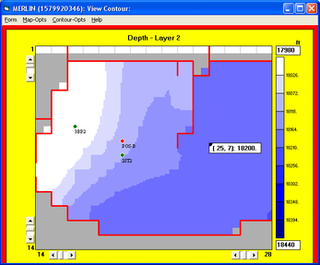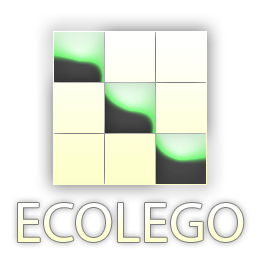
A simulation is an imitative representation of a process or system that could exist in the real world. In this broad sense, simulation can often be used interchangeably with model. Sometimes a clear distinction between the two terms is made, in which simulations require the use of models; the model represents the key characteristics or behaviors of the selected system or process, whereas the simulation represents the evolution of the model over time. Another way to distinguish between the terms is to define simulation as experimentation with the help of a model. This definition includes time-independent simulations. Often, computers are used to execute the simulation.
SPICE is a general-purpose, open-source analog electronic circuit simulator. It is a program used in integrated circuit and board-level design to check the integrity of circuit designs and to predict circuit behavior.

Computer simulation is the process of mathematical modelling, performed on a computer, which is designed to predict the behaviour of, or the outcome of, a real-world or physical system. The reliability of some mathematical models can be determined by comparing their results to the real-world outcomes they aim to predict. Computer simulations have become a useful tool for the mathematical modeling of many natural systems in physics, astrophysics, climatology, chemistry, biology and manufacturing, as well as human systems in economics, psychology, social science, health care and engineering. Simulation of a system is represented as the running of the system's model. It can be used to explore and gain new insights into new technology and to estimate the performance of systems too complex for analytical solutions.

OrCAD Systems Corporation was a software company that made OrCAD, a proprietary software tool suite used primarily for electronic design automation (EDA). The software is used mainly by electronic design engineers and electronic technicians to create electronic schematics, and perform mixed-signal simulation and electronic prints for manufacturing printed circuit boards (PCBs). OrCAD was taken over by Cadence Design Systems in 1999 and was integrated with Cadence Allegro in 2005.
Large-scale Atomic/Molecular Massively Parallel Simulator (LAMMPS) is a molecular dynamics program from Sandia National Laboratories. LAMMPS makes use of Message Passing Interface (MPI) for parallel communication and is free and open-source software, distributed under the terms of the GNU General Public License.

Reservoir simulation is an area of reservoir engineering in which computer models are used to predict the flow of fluids through porous media.

Event chain methodology is a network analysis technique that is focused on identifying and managing events and relationship between them that affect project schedules. It is an uncertainty modeling schedule technique. Event chain methodology is an extension of quantitative project risk analysis with Monte Carlo simulations. It is the next advance beyond critical path method and critical chain project management. Event chain methodology tries to mitigate the effect of motivational and cognitive biases in estimating and scheduling. It improves accuracy of risk assessment and helps to generate more realistic risk adjusted project schedules.

Ecolego is a simulation software tool that is used for creating dynamic models and performing deterministic and probabilistic simulations. It is also used for conducting risk assessments of complex dynamic systems evolving over time.
Analytica is a visual software developed by Lumina Decision Systems for creating, analyzing and communicating quantitative decision models. It combines hierarchical influence diagrams for visual creation and view of models, intelligent arrays for working with multidimensional data, Monte Carlo simulation for analyzing risk and uncertainty, and optimization, including linear and nonlinear programming. Its design is based on ideas from the field of decision analysis. As a computer language, it combines a declarative (non-procedural) structure for referential transparency, array abstraction, and automatic dependency maintenance for efficient sequencing of computation.
Probability bounds analysis (PBA) is a collection of methods of uncertainty propagation for making qualitative and quantitative calculations in the face of uncertainties of various kinds. It is used to project partial information about random variables and other quantities through mathematical expressions. For instance, it computes sure bounds on the distribution of a sum, product, or more complex function, given only sure bounds on the distributions of the inputs. Such bounds are called probability boxes, and constrain cumulative probability distributions.
CS Group, initially known as CS Communication & Systèmes, is a French information-technology service company listed on the Paris Bourse as a member of the CAC Small index. The company designs information systems, develops and integrates software, manages projects and deploys industrial applications, and provides science, technology, and consulting services. CS Group is the French leader in air traffic control, the third-biggest supplier of traffic-management systems in the world and provides information technology consulting services.

Wolfgang Kröger has been full professor of Safety Technology at the ETH Zurich since 1990 and director of the Laboratory of Safety Analysis simultaneously. Before being elected Founding Rector of International Risk Governance Council (IRGC) in 2003, he headed research in nuclear energy and safety at the Paul Scherrer Institut (PSI). After his retirement early 2011 he became the Executive Director of the newly established ETH Risk Center. He has both Swiss and German citizenship and lives in Kilchberg/Zürich. His seminal work lies in the general area of reliability, risk and vulnerability analysis of large-scale technical systems like nuclear power plants of different types and complex engineered networks like power supply systems, the latter coupled to other critical infrastructure and controlled by cyber-physical systems. He is known for his continuing efforts to advance related frameworks, methodology, and tools, to communicate results including uncertainties as well as for his successful endeavor in stimulating trans-disciplinary and trans-sectional cooperation to improve governance of emerging systemic risks. His contributions to shape and operationalize the concept of sustainability and - more recently - the concept of resilience are highly valued. Furthermore, he is in engaged in the evaluation of smart energy systems and future technologies, including new ways of exploiting nuclear energy, and cooperative automated vehicles as a cornerstone of future mobility concepts.
Intaver Institute is a software development company that develops a suite of project management, risk analysis and risk managementapplications. Intaver Institute's product is project risk management and risk analysis software suite RiskyProject. Intaver Institute is a privately owned company headquartered in Naples, Florida, United States and Calgary, Alberta, Canada.
System-level simulation (SLS) is a collection of practical methods used in the field of systems engineering, in order to simulate, with a computer, the global behavior of large cyber-physical systems.
CloudSim is a framework for modeling and simulation of cloud computing infrastructures and services. Originally built primarily at the Cloud Computing and Distributed Systems (CLOUDS) Laboratory, the University of Melbourne, Australia, CloudSim has become one of the most popular open source cloud simulators in the research and academia. CloudSim is completely written in Java. The latest version of CloudSim is CloudSim v6.0.0-beta on GitHub.
Techno-economic assessment or techno-economic analysis is a method of analyzing the economic performance of an industrial process, product, or service. It typically uses software modeling to estimate capital cost, operating cost, and revenue based on technical and financial input parameters. One desired outcome is to summarize results in a concise and visually coherent form, using visualization tools such as tornado diagrams and sensitivity analysis graphs.

Micro Saint Sharp is a general purpose discrete-event simulation and human performance modeling software tool developed by Alion Science and Technology. It is developed using C# and the .NET Framework. Micro Saint Sharp allows users to create discrete-event simulations as visual task networks with logic defined using the C# programming language.
Katrina Groth is an American mechanical engineer and professor. Groth is an associate professor in Mechanical Engineering at the University of Maryland, College Park, where she is the associate director for research for the Center for Risk and Reliability and the director of the Systems Risk and Reliability Analysis lab (SyRRA). Groth previously served as the Principal Research & Development Engineer at Sandia National Laboratories.







